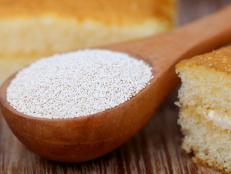All Your Sourdough Questions, Answered
Our test kitchen pro tells you everything you need to know before you make your own loaf.


Photograph by Ralph Smith
Homemade sourdough has been beloved by artisan bakers for years, but it became a national obsession this spring when Americans found themselves stuck at home. Google searches for recipes reached an all-time high, and baking a loaf became the quintessential quarantine activity: It’s time-consuming, and you need only flour and water — no yeast, because the starter, which is the base of every sourdough loaf, is naturally leavened by bacteria and wild yeast. People have been making bread this way for thousands of years, but America’s sourdough culture dates back to the California Gold Rush: Miners traveled with starters, and the bread they made tasted slightly sour thanks to a strain of local bacteria. (San Francisco’s Boudin Bakery still makes sourdough from a Gold Rush–era starter!) The best way to make your own sourdough is with a starter from a fellow baker, but if you aren’t able to get one, you can grow your own with this recipe from our test kitchen sourdough pro Alexis Pisciotta.
Recipe: Sourdough Boule (pictured above)

Photograph by Ralph Smith
Q: I missed a feeding. Now what?
Feed your starter every 12 hours at room temperature for a day or two to bring it back to life. I left a starter in the fridge for two months when I fled my apartment at the start of the pandemic — when I came back, I fed it three times and baked a lovely loaf of bread!
Q: Does the type of flour matter?
Yes! Use whole-wheat flour to create the starter — the extra nutrients will help kick-start the process. I use unbleached all-purpose flour for feedings. The fresher the flour, the better the results; you want to capture the wild yeasts that exist on the flour.
Q: Do I have to discard some of the starter?
You need to keep the amount of starter in the jar consistent or it will grow exponentially and take up space. You don’t have to discard it though: You can give some away, or you can add some to pancakes or waffle batter for sourdough flavor (you’ll still need a leavener).
Q: How do I know if my starter is dead?
If the starter doesn’t rise when you feed it, it is likely inactive. You can probably bring it back to life after a few feedings; if it takes many feedings, you are basically just growing a new starter, which is fine, too!
Ready to make your Sourdough Starter? Check out our step-by-step guide.
Related Links:

































.jpg.rend.hgtvcom.231.174.suffix/1681323015319.jpeg)
